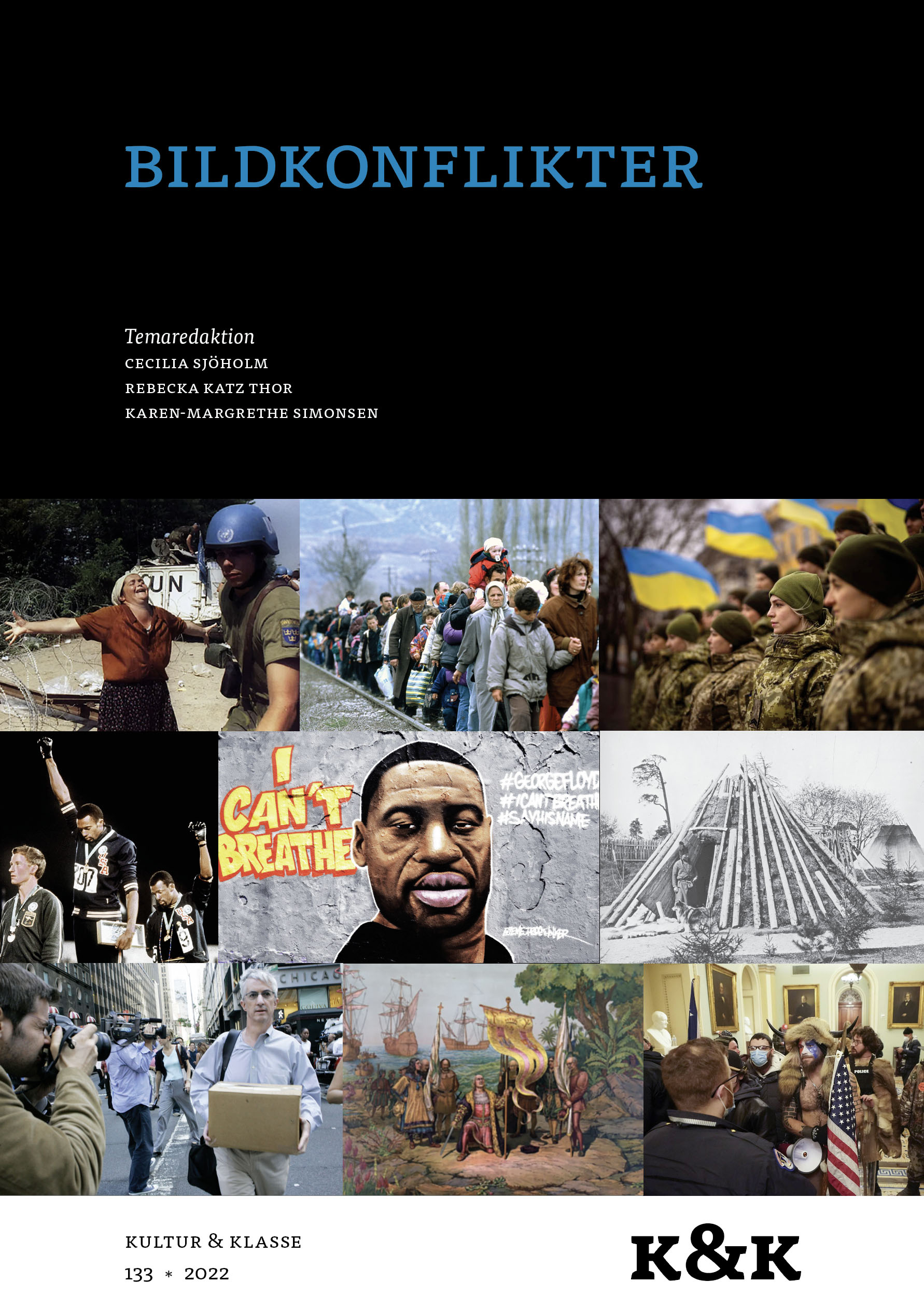Fortolkning, betydning og magt
Reklamestereotyper til forhandling
DOI:
https://doi.org/10.7146/kok.v50i133.132774Nøgleord:
Reklamer, kønsstereotyper, medier, forbrugerklager, Forbrugerombudsmanden, Radio- og TV-nævnetResumé
Advertising images have been a focal point of feminist activism and protest since the 1960s, and criticism of the negative impact of commercially mediated gender stereotypes has also been met with political attention. As an EU member state, Denmark is obliged to integrate the objectives of eliminating the media’s stereotypical representations of gender into their respective national legislation and guidelines. Nevertheless, a review of the Danish Consumer Ombudsman’s (FO) and the Radio and TV Board’s (RTN) practices, which are the two Danish bodies that regulate advertising in Denmark, demonstrates a reluctance in prohibiting the dissemination of advertising that may be perceived as offensive or sexist. Through analysis of advertising examples that have been accused of gender discrimination, and their case processing by the two above-mentioned authorities, the article here focuses on advertising as an arena for different and often conflicting agendas and discourses. The article revolves around the importance of advertising images’ representations of gender as well as their regulation and politicization and it demonstrates how visual messages and their significance for equality are up for constant debate. By questioning the way in which Danish authorities evaluate gender discrimination in advertising it thus enters a broader international and political discussion about the formative power of commercial images.
Referencer
Amy-Chinn, Dee. ”This is just for me(n). How the regulation of post-feminist lingerie advertising perpetuates woman as object”. Journal of Consumer Culture 6 2 (2006): 155-175.
Antoniou, Alexandros, og Dimitris Akrivos. ”Gender portrayals in advertising: stereotypes, inclusive marketing and regulation”. Journal of Media Law 12 1 (2020): 78-115.
Barrington-Leach, Leanda E. ”International Legal Framework and Current Developments”. Ending Gender Stereotyping and Sexist Portrayals in Advertising. FemCities Conference, 2012. 14-19.
Berger, John. Ways of Seeing. London: BBC og Penguin, 1972/1988.
Blloshmi, Ana. ”Advertising in Post-Feminism: The Return of Sexism in Visual Culture?” Journal of Promotional Communications 1 1 (2013): 4-28.
Caputi, Jane. ”The Pornography of Everyday Life”. Gender, Race, and Class in Media. Red. Gail Dines og Jean M. Humez. California: Sage, 2015. 373-385.
Dansk Synonymordbog. Web 9. februar 2022. https://sproget.dk/lookup?SearchableText=arena
Den Danske Ordbog. Web 9. februar 2022. https://sproget.dk/lookup?SearchableText=arena
Forbrugerombudsmanden. Retningslinjer om kønsrelateret reklame af 1. april 2012. 2012.
Giomi, Elisa, Silvia Sansonetti og Anna Lisa Tota: Women and Girls as Subjects of Media’s Attention and Advertisement Campaigns: The Situation in Europe, Best Practices and Legislations. European Parliament, Bruxelles, 2013.
Gill, Rosalind. Gender and the Media. Cambridge: Polity Press, 2007.
Gill, Rosalind. ”Supersexualize me! Advertising and the midriffs”. Mainstreaming Sex: The Sexualisation of Western Culture. Red. Fiona Attwood. London: I.B. Tauris, 2009. 93-109.
Goffman, Erwin. Gender advertisements. New York: Harper & Row, 1979.
Hirdman, Anja. ”Mirrored Masculinity? Turning the Perspective of Sexualization and Representation around”. Nikk Magasin 3 (2004): 8-11.
Lazar, Michelle M. ”Politicizing gender in discourse: Feminist critical discourse analysis as political perspective and praxis”. Feminist critical discourse analysis. Red. Michelle M. Lazar. UK: Palgrave Macmillan, 2005. 1-28.
Marron, Maria B. ”Introduction”. Misogyny and Media in the Age of Trump. Red. Maria B. Marron. London, UK: Lexington Books, 2020. 1-8.
Meier, Isabella. ”Concepts of sexism. Ending gender stereotyping and sexist portrayals in advertising”. Ending Gender Stereotyping and Sexist Portrayals in Advertising. FemCities Conference, 2012. 8-13.
Reklamebekendtgørelsen. Kulturministeriet. 2020.
Rudloff, Maja. ”Legitimizing Sexist Advertising: A Critical Focus on the Danish Consumer Ombudsman’s Guidelines and Adjudications of Complaints of Gender Discrimination”. NORA Nordic Journal of Feminist and Gender Research 28 4 (2020): 329-342.
Rudloff, Maja. ”’Women are from Venus and Men Play Oddset’: Constructions of masculinity in responses to complaints of sexism against women in Danish TV commercials”. Feminist Media Studies 16 1 (2016).
Svensson, Eva-Maria, og Maria Edström. ”Freedom of Expression versus Gender Equality. Conflicting Values when Regulating Gender Stereotypes in Advertising”. Tidsskrift for Rettsvitenskap 127 5 (2014): 479-511.
Williamson, Judith. Decoding Advertisements: Ideology and meaning in advertisements. UK: Marion Boyars, 1978.
Woodzicka, Julie A., og Thomas E. Ford. ”A Framework for Thinking about the (not-so-funny) Effects of Sexist Humor”. Europe’s Journal of Psychology 6 3 (2010): 174-195.
Downloads
Publiceret
Citation/Eksport
Nummer
Sektion
Licens
Tidsskriftet følger dansk ophavsret.





